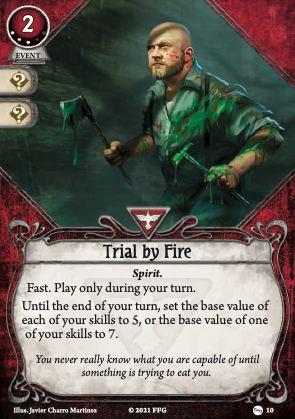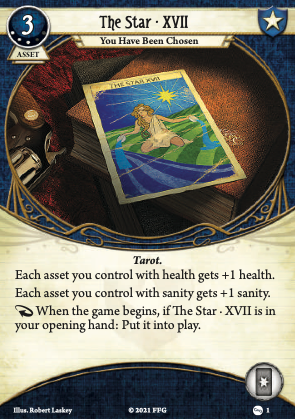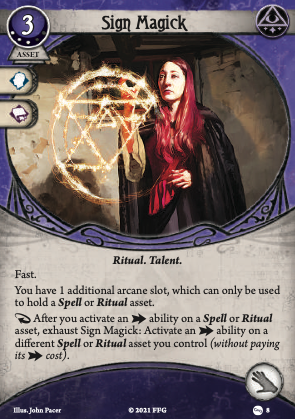
Using this directive means there is no point in Roland using police dogs in the extra ally slot. As the dogs only bite after they have been assigned damage.
Brother Xavier: Pure of Spirit is also made worthless.

Using this directive means there is no point in Roland using police dogs in the extra ally slot. As the dogs only bite after they have been assigned damage.
Brother Xavier: Pure of Spirit is also made worthless.

Very funny and tricky Directive card, I think. You can very strange play by triggering. Note that you may play a event during any player window as in Fence FAQ, as I know. If it's revealed that it's not true, please ignore this review at all.
However, the Regulation is strong. You can play at most 2 cards for each round. Don't forget this limit includes not only events, but also assets. If you plan to trigger , you can only play 1 card for each round. One solution is Stick to the Plan + Ever Vigilant combo. Just reveal , and play Ever Vigilant.
I think here is a dilemma that the commit-based deck seems to be suitable due to play-regulation. However, parallel deckbuilding may access limited number of skills and normal deckbuilding may access limited number of tactic/insight events.

...this would be an amazing card for preston were it not 3 exp. But given how it is, this card is amazing on a lot of people who can take it! Calvin loves it, Wendy loves it, Yorick and Silas love it, it's quite the card upgrade!

I really don't like Tarot cards (not Lovecraftian at all) but I get why RttCU has gone all-in on amping up Tarot for the rest of this campaign. Still, if you have Dunwich, Forgotten Age and Innsmouth runs where any investigator is running a Tarot card, it's way too 'min-maxy' for me, favouring trying to boost your stats in a slot you wouldn't use over story. Boo hiss.

If you fill your extra slot with Haste you can activate one spell, then activate one other and then exhaust Haste to reactivate one of the two (or your Henry Wan if you are going the blurse way with Dexter) for one measly action! Just make sure one of the spells doesn't require charges because you'll be going through them like nobody's business (but Dexter doesn't really care as long as you have good card draw to replace the empty spells). Spectacular upgrade to a very weak card.